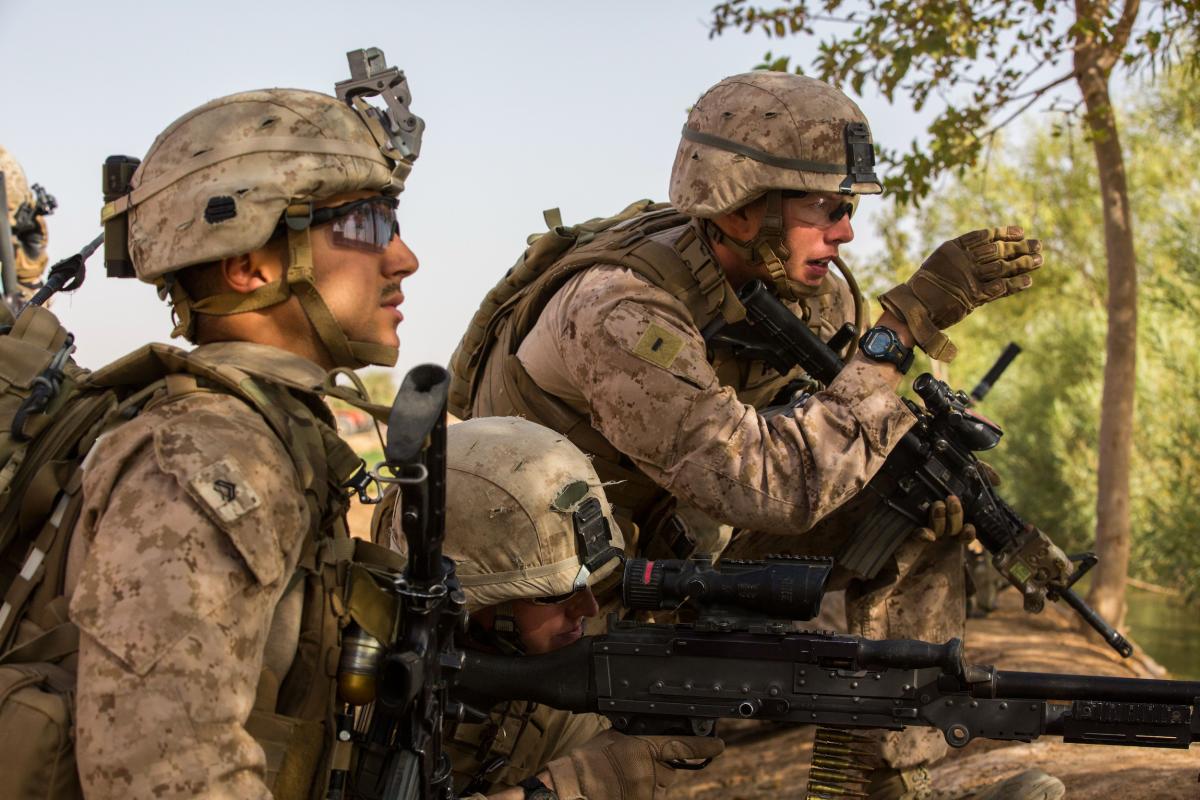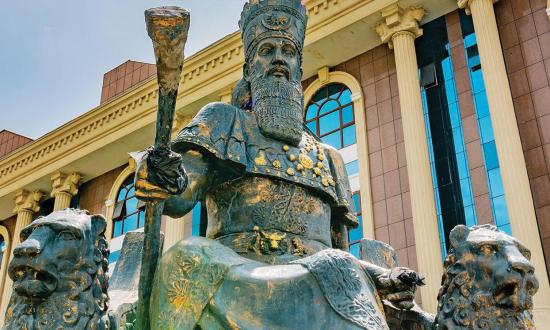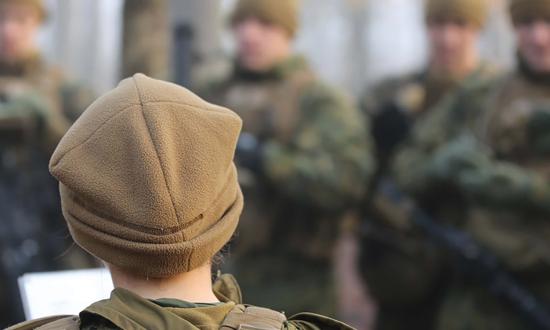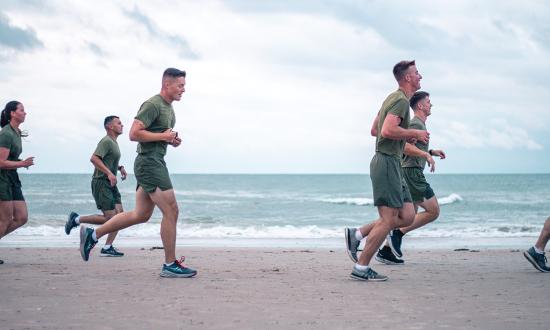On the eve of leaving active-duty military service, I recall three notable chapters that shaped my understanding of what a leader is, and—more importantly—what a leader is not. Many of these harsh lessons were learned while serving as a Marine Corps infantry officer and Marine Corps Forces Special Operations Command special operations officer during overseas deployments, where the contrast between the consequences of mission failure, risk to force and mission, and operational environments varied wildly.
Through this lens, I would like to not only characterize a maturation process that took place over more than a decade of refinement (and continues today) but identify and describe a few different tiers of leadership styles that may be prevalent today. I hope to address junior officers currently rising through the ranks with the best of intentions as I once did, following the time-honored tradition of sometimes screwing it up and sometimes getting it right.
Looks Like a Leader
The year is 4 BC (Before Commissioning in 2007). An eager, 17-year-old man stands in line with one thousand others like him, full of promise and potential as he enters America’s “Leadership Academy” to build the foundation to execute the oath he is about to take. This journey is full of proverbs, buzzwords, and altruisms. “First one in, last one out” … “Last to eat” … “Servant Leader” … “Leads by example” … “Leads from the front.” This young man subscribes. He buys the books, relies on the lesson, and vies to give it his all, and on graduating he is certified as a blue-blooded officer in the U.S. Marine Corps. Time to put this leadership thing into action.
The Basic School in Quantico, Virginia, is much like the Marine Corps Infantry Officer Course in that the leadership factory, operating at full capacity, turns out hundreds of leaders a year. The statue greeting the entryway to the command deck splitting the two schools, affectionally known as Iron Mike, displays a posture of the confident leader in the middle of intense combat, just as this young man hopes to emulate—M16 assault rifle grasped by the pistol grip in one arm and perfectly pointed at the 10 o’clock position, other arm cocked 90 degrees as he charges into battle and yells over his shoulder something motivating, such as “Come follow me, men! Do you want to live forever!” as enemy rounds whizz by. That’s what all those leadership books talked about!
The truth is all the books essentially say the same thing, don’t they? Good leaders are A, B, and C. Bad leaders are X, Y, and Z. The doctrine found in most MBA programs’ reading lists, the PowerPoint presentation of a keynote speaker at a leadership seminar for a middle management sales team, or the syllabus found in a prestigious service academy—it all looks similar. So, why is this whole leadership thing so hard? If we know the secret sauce to leadership, why don’t we just do it? Well, this young man does do it. With the Infantry Officer Course Honor Graduate and Wheeler Leadership Award in his back pocket, he travels across the country to stand in front of his first Infantry platoon.
In the Infantry, this young motivator walks loudly and carries a big stick. His morning physical fitness runs—meant to grind his Marines into the dirt, cut the fat, separate the wheat from the chaff, and be the proverbial break-off session of the day—are a constant reminder to the unit of how impressively physically fit he is. This obviously builds confidence and unit cohesion in his company, right? They execute hard, realistic training, where the battalion leader awards him high remarks and evaluations. When questioned about a reading assignment from the regimental commander, he responds with the perfect, preplanned, well thought out, curated answer. How profound he is! That should secure his stellar fitness report, and probably even a medal after this rotation. Especially since he neglects his family and responsibilities as a husband and father to go above and beyond the call of duty. His superiors may not see the personal-life torpedo he has aimed at himself, but how they admire the professional rocket ship of his career!
This junior officer is brimming with unlimited potential, an ego that cannot be contained, and a vocabulary of all the color-by-the-number leadership automated responses. His hubris, however, had little use in Helmand Province, Afghanistan. A determined enemy is not impressed by your latest fitness report. The first time this young man was shot at, an enemy sniper bullet ricocheted off his Kevlar helmet. That must have dislodged the arrogance and entitlement that had been stuck inside his head, because what came after was a long-overdue “A-ha!” moment. Six months of IED-infested patrols, heliborne raids, vehicle interdictions, ground assaults, complex ambushes, indirect fire, freezing nights, and witness to his Marines’ collective willingness to accomplish the mission in harm’s way made it apparent that there was no tolerance for his old “leadership style.”
Instead, what was needed was influence. Leaders have the power to influence the mission and impact the people accomplishing it, instead of furthering their self-interests. Leadership is needed when there is a problem. Truly difficult situations will be laid at the feet of leaders instead of the garden-variety ethical dilemmas studied in class, and their moral compass, tactical acumen, and motives will be the deciding factor. When the mission is consequential, when the lives of people rely on true competence, the “going-through-the-motions” leaders don’t cut it. Lesson learned.
Looks Like a Leader, Talks Like a Leader
The year is 8 AC (After Commissioning). Not only has this young man matured into an elite practitioner of the profession, but he has also built himself a hallmark reputation. After years of success in the infantry, he has screened for and completed the pipeline for Marine Corps special operations. He is now a team commander in this elite force and oversees highly skilled, mature operators that comprise cross-functional teams assigned to some of the nation’s most difficult, sensitive, and strategic problems. Throughout arduous workups and deployments, he manages world-class teams. He is no longer the subject-matter expert, but he manages a team of professionals who drive the bus on their own.
And how does he manage this team? Well, for starters, thorough mission planning, operational design, processes development, operations/intelligence integration, targeting, human intelligence collection, asset integration, contingency briefs, concept of operations, acquisitions and partner force divestment, key leader engagements, training schedules and budgets, post mission products, situation reports, financial accountability, preventative maintenance, after action debriefs, combat logistics and supply, training meetings, targeting meetings, sync meetings, meetings about meetings, white boards, overlays, measure of performance analysis, VIP visits, terminal-air-control qualifications, charts, graphs, host-nation negotiations, lines of accounting, lethal aid partner-force funding, linguist management, enabler development, requests for support, authorities and permissions analysis, State Department liaison—and how the list goes on and on!
Truly, this leader is lethal. Specially assessed and selected, with millions of dollars invested into him, he is influencing the process the best way he knows how. Not only are all warfighting functions in the purview of his domain, but he owns the process in the myriad of measurable qualities that make teams effective or not. He manages a well-oiled machine, but seems to have found the careful balance between micro- and macro-management, until . . .
On a hot summer day in northern Iraq, on a heavily defended island in the middle of the Tigris River, his unit lost one of the most revered, well-respected, and loved senior-enlisted leaders from enemy fire. As the team grieved an incredible loss, all this team commander’s administrative acumen, staff officer prowess, and managerial talent was suddenly irrelevant. In this moment, what was needed was not a manager or supervisor, but a leader who would recalibrate the team to maintain focus. Despite the shared pain and desire to take vengeance, become cynical, or feel victimized, the burden of command meant carrying the responsibility to steer the ship in the middle of a storm. Being the example of professionalism and emotional stoicism, it was his responsibility to drive the team to reenergize its targeting efforts, increase partner effectiveness and lethality, and not only recover from this traumatic event, but respond.
Three months later, while leading a high-value target capture/kill mission, the team’s host nation partners overlooked a mountainside cave they were directed to clear. As a result, this team commander began to clear the fighting position as a method to coax the hesitant partner force back to clearing their assigned sector. While engaging an enemy combatant, he received a gunshot wound to his hip and sought cover behind a boulder at the cave entrance.
Staying calm and collected while pushing back the well defended enemy from inside the cave, he realized that this was an opportunity to lead by example with all eyes on him, not simply pay lip service to the phrase or manage the process through others doing what he was called on to do himself. Through a deliberate decision, the team commander continued to work the problem and prioritize the mission and team to win the fight. Before this opportunity to learn something new about leadership, the manager would have simply supervised or ordered others into harm’s way. This lesson instead reinforced the necessity for leaders to own the expectation, deliver precise commander’s intent, safeguard the mission, and maintain the strategic imperative. In times of chaos or crisis, teams don’t need managers—they need leaders.
Those Being Led Make the Vote
The word “leader” is a privilege and honor to be earned, given only by the enemy and the ones subject to that leadership in question. Only those two entities get to decide who earns that title, yet modern corporate and military culture throws it around as a substitute for a variety of descriptors for the person responsible, accountable, in charge, with the billet, rank on their collar, LinkedIn history, email signature, or corner office.
I have been a leader for most of my career in the legal sense, but—as I reflect upon those I have had the absolute pleasure of serving—I realize I have only been a true leader for a precious few moments. Looking in the rear-view mirror, as we all reflect on our successes and failures as leaders of our families, military units, businesses, or circle of peers, maybe the point is to come to grips with the fact that we all miss the mark most of the time.
If we accept that those we lead and the missions we protect deserve the absolute best we could possibly offer, then human nature would dictate that we do, in fact, come up short. However, if we continue to remind ourselves that just because it looks like a leader and talks like leader, it doesn’t automatically make it so, then we have a much greater chance to realize our potential as we strive to be that perfect leader that all those books, statues, and memorials represent.






